You might think that buying a good projector will secure bright and clear picture at all conditions. But even the best device won’t do the job if your projector screen doesn’t reflect enough light. Depending on the room’s conditions and size, you’d have to consider great variety of projector screens and even their colors. So, at some point the question of black projector screen vs. white projector screen will stand before you.
While you think that standard white screens are the only option that feels right, there is much to learn about the role of color in your projector screen. We won’t go deep in physics of the light projection, but will explain you the difference through simple examples and terms. Why black projector screens became so popular of late? Why people start to change their projector screen color from white to grey at least? Does the picture quality truly benefit from darker screen color or is it a marketing trick? Read on to learn the answers to these questions and more.
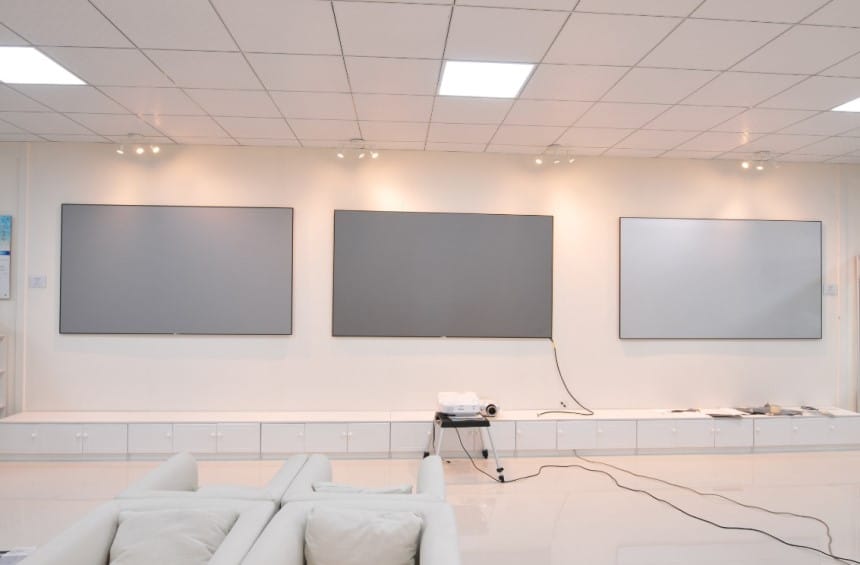 How the screen color can change the game
How the screen color can change the gameIt is impossible to find the best screen without understanding how projectors work. A projector simply casts light on the screen, which displays the images you wish to present by reflecting the light. The smoother the surface and darker the environment – the better your picture will get, thus improving your viewing experience. And this is why you need an appropriate and efficient screen to display your work or school ideas, as well as enjoy movie and game fun at home.
The amount of direct and ambient light in the room will influence the quality of the picture as well. Your screen reflects all of the light it receives, the white screen being the most reflective of all. This is the basic information you need to understand, but you can choose sources that will explain reflection physics Trusted Source Reflection (physics) - Wikipedia Reflection of light is either specular (mirror-like) or diffuse (retaining the energy, but losing the image) depending on the nature of the interface. en.wikipedia.org thoroughly if you’ d like. So, when installing projector screen, you’d have to consider the conditions for it first.
In the dark enough room, standard screens work perfectly well and you might not even want to change for a better option. But the more light your screen meets, the darker it should be.
With several projector screens available today, you should try out one that offers you a fantastic watching experience. Choose from black or white colors, or consider the neutral gray color as an option. The primary goal should be to regulate the resolution and lumens of your projector if you wish to have brighter and more clear images. And now let’s learn pros and cons of different projector screen colors.
Here on the video, you can see a comparison of different projector settings with several screens with and without ambient lights. This shows the true viewing experience, but below we will explain how to gain a clearer picture in each type.
If you have been working on presentations for a while then you know white is the most popular color, and for certain reasons. It is versatile and may work in different scenarios.
In many home theaters, you are likely to have a white screen that is preferred because it projects bright and accurate light. In fact, white screens reflect light way better than their black counterparts. This means that they end up creating very clear images for the audience.
Since white projector screens have been around for a while, they are quite popular among many users. Most home video and digital monitors use white color to ensure better reflection and image brightness. The audio-video industry also uses white as a default screen color as it does not distort the images.
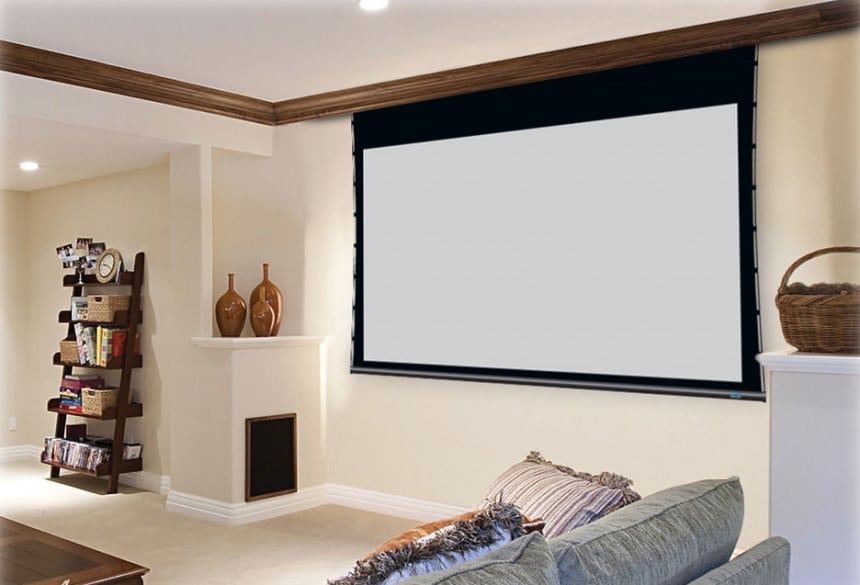
At the same time, white color screens are also popular because they are affordable and readily available. You can easily find a white screen that comes with acoustics and micro-perforations. For example, the Delux Screens Ambient Light Rejecting 4K/8K Ultra HDR Projector Screen is a good white screen projector that works great for most home theater duties. The screen provides several features, such as letting the sound pass when watching a movie.
The only drawback to this type of screen is that you may have to darken the room thoroughly to get a good image. Because of its powerful reflective properties, any bright lights will definitely impact the quality of your images. White screens are known to reflect light to your ceilings or wall and can limit some high-resolution colors.
Alternatively, you might need to use a powerful projector with higher number of lumens to get a clear picture. However, you are much likely to get poor image clarity if your projector has little lumens. Sometimes, white screens will dilute or wash out some colors whenever there is little ambient light.
The alternative to the regular white screen is to opt for a black one. Since their discovery, black screens have grown in popularity because of their absorbing features. Even when there is a lot of light, a black screen will still offer you a high-quality image. You will also notice that the images are of a better quality since they have a better contrast and can show the dark aspects of an image well.
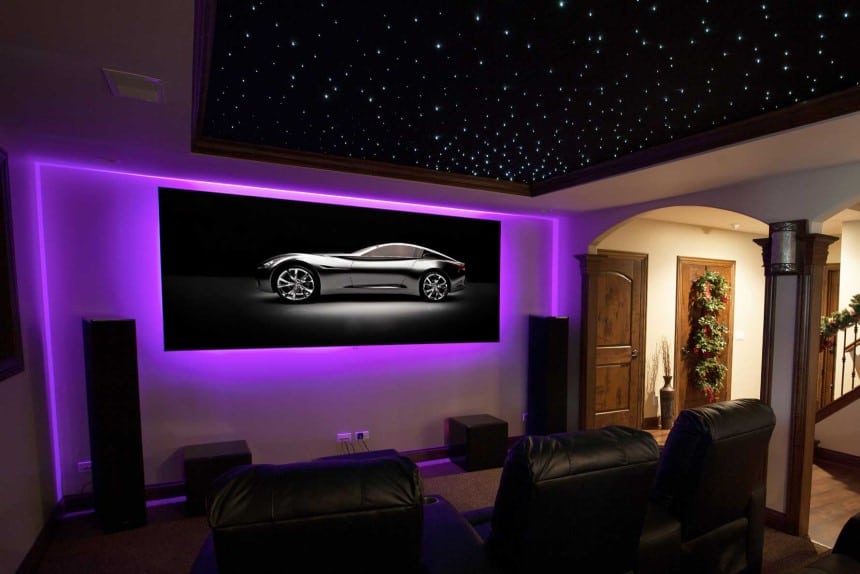
Simultaneously, you are much likely to enjoy bright colors on your black screen as opposed to a white screen because its contrast. Some white screens may struggle with showing some colors, black screen’s edge them in creating clear and vivid images. The good quality of images displayed on black projectors makes then suitable when looking to buy a projector screen.
The contrast in using black screens comes from their ability to absorb all nearby lights. Hence, you won’t have to close doors or windows before presenting to an audience. Black screens don’t brighten the viewing room by reflecting rays, thus maintaining color contrast and quality. There are many great black screen options on the market that have customer approvals. The Akia Screens Drop Down Projector Screen AK-MOTORIZE104V1 is considered the best black screen option for color quality and contrast.
The only drawback to using black screen projectors is their lack of viewing flexibility. Since they don’t reflect light to nearby surfaces, you can only view the image when sitting directly before the screen. Unlike a screen that is white, you cannot view images on a black screen when seated at an angle, which may affect a large audience. Also, you get a shimmer effect when you use a black screen. It is, however, worth noting that black screens are quite expensive and it may be difficult to find them.
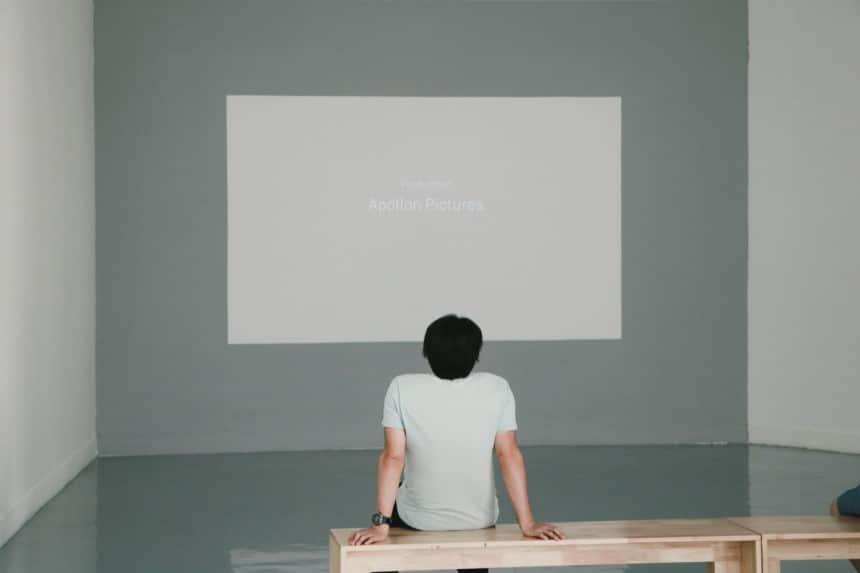
Yet we feel that a painted screen can be a better option for home theater. It allows for the clearest picture, great experience and vivid colors. You will decide which color you want your screen to be and how big it will be, thus matching your projector resolution. This is a totally custom screen you will adjust for yourself. There are plenty of projector screen paints with high gain superior, like the Paint on Screen S1 Ultimate Contrast screen paint, that will breathe some life into your walls with quality HD images.
However, a painted wall may not show the same 4K resolution or contraction as a projector screen. Hence, the image quality may be compromised. You need a flawless wall or surface if you are to make a projector screen using paint. Any marks, holes or paint drips on the wall will affect the projection.
As highlighted previously, black screens are a better option than white ones when you are looking for a perfect projector screen for outdoors. Some features such as being good absorbers of light and poor reflectors allow them to work in outdoors. What’s more? Black screens work perfectly even in the presence of ambient light without affecting image quality. They also have better contrast that allows presentation in bright places.
Some white outdoor screens offer black back side for better picture quality, like Elite Screens Yard Master Plus Series. It gives clear image even at dusk when there’s still enough of ambient light to distort a picture.
Alternatively, gray color can also be an option for outdoors. It has better contrast than the white screen and great absorption of ambient light. Gray is much darker, thus creating darker and lighter areas when projecting. If you wish to get the best outdoor projector screens, you can find several screens available that are suitable.
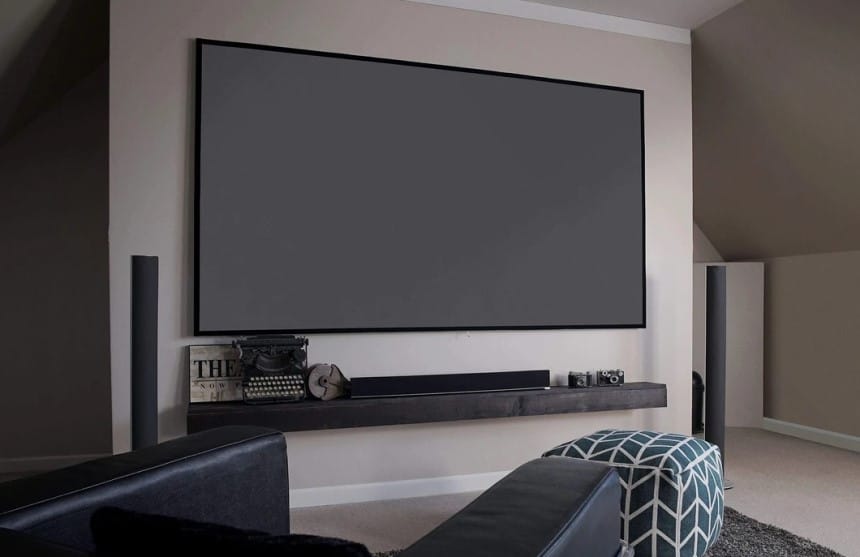
It is worth noting that gray screens have an almost similar absorbent capabilities as black ones. However, they have better reflection abilities than black screens, which makes them suitable for outdoor use also. These gray screens are relatively new as they were introduced in 2001 but they have grown in popularity since then. They are great for digital video projectors mainly because they can deal with high contrast well. They work well when indoors too.
One crucial feature of using this color on your screen is its ability to prevent bleeding of light into darker screen areas. Unlike the black colored screen, you can view it from any angle thereby giving you a great watching experience. One thing that you may not like about this color is that it may leave a tint on the images. It is not uncommon to see grayish hues in the lighter parts of your screen.
Finding the best projector screen color is dependent on many things including your needs and purpose for using it. Based on this discussion, you will find that black screens can be quite effective when you are making presentations due to their image contrast. These screens are also suitable for use when working outdoors in the light. The challenge that you will likely face with these screens is their poor viewing angles and difficulty to find a suitable option to buy.
It is imperative to choose a color that will address your unique demands. This will mostly boil down to how you intend to use it and your budget. In some circumstances, painting a wall may be a better option than getting a purchased one. This is great if you can get access to the right paint and you find a suitable wall surface. When choosing black projector screen vs. white projector screen and even grey option, you should always think of what is your personal preference in image quality. And with this article you finally can make an informed decision.





